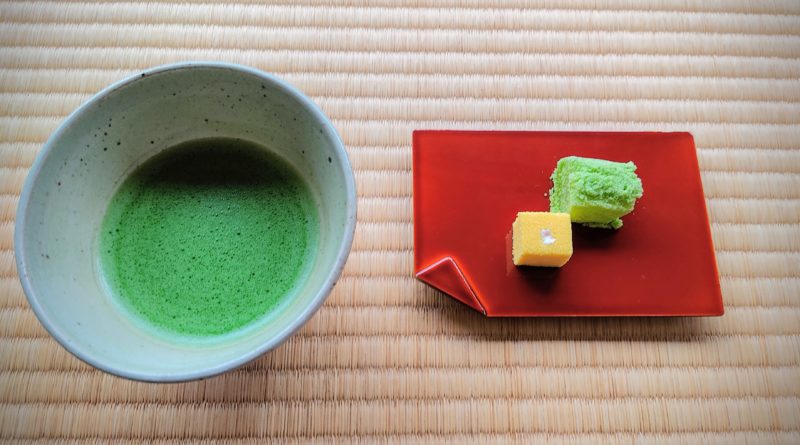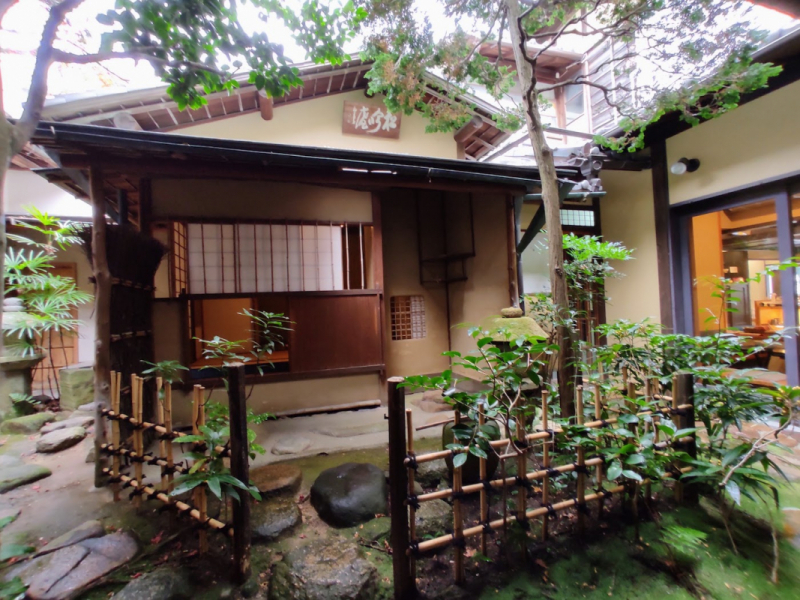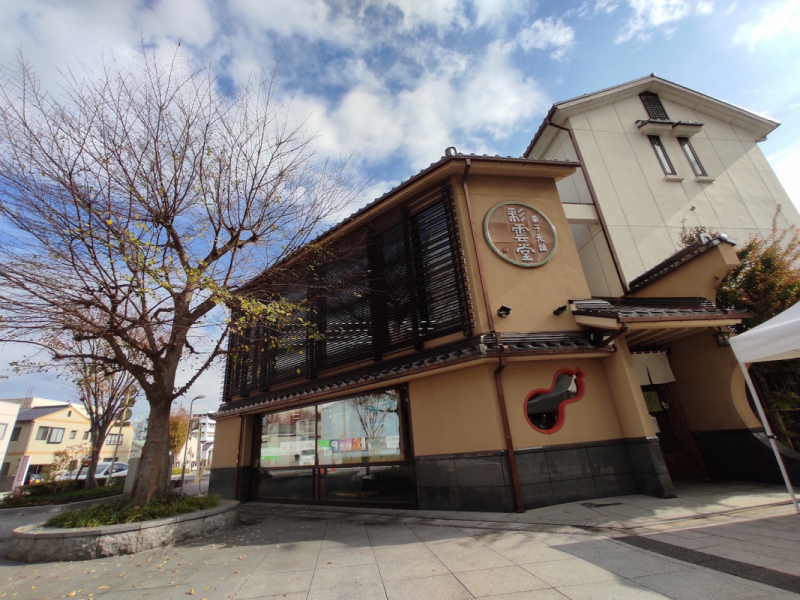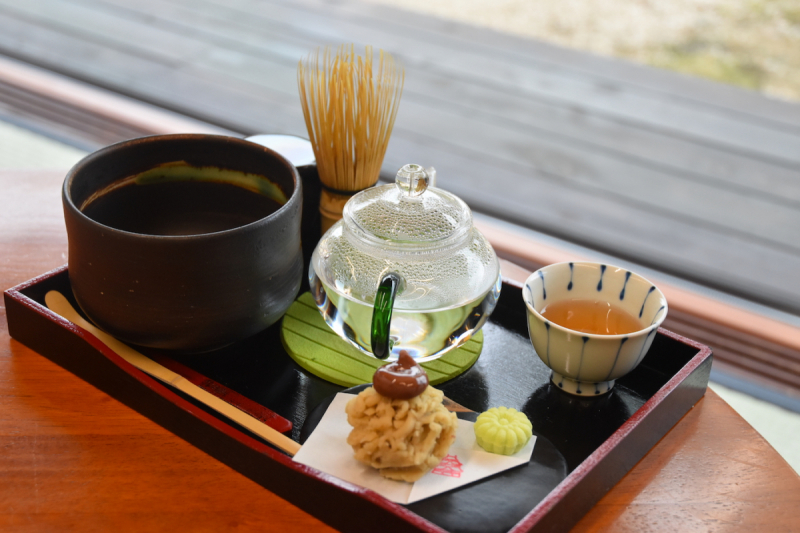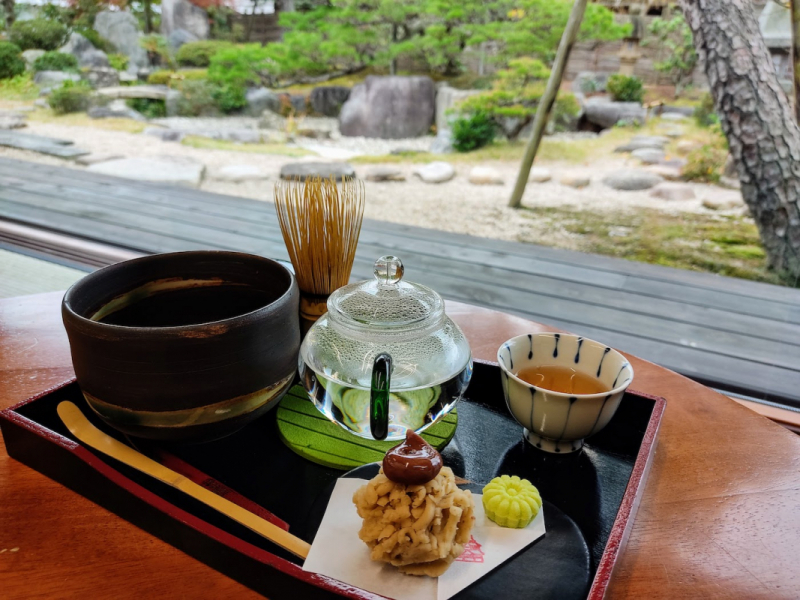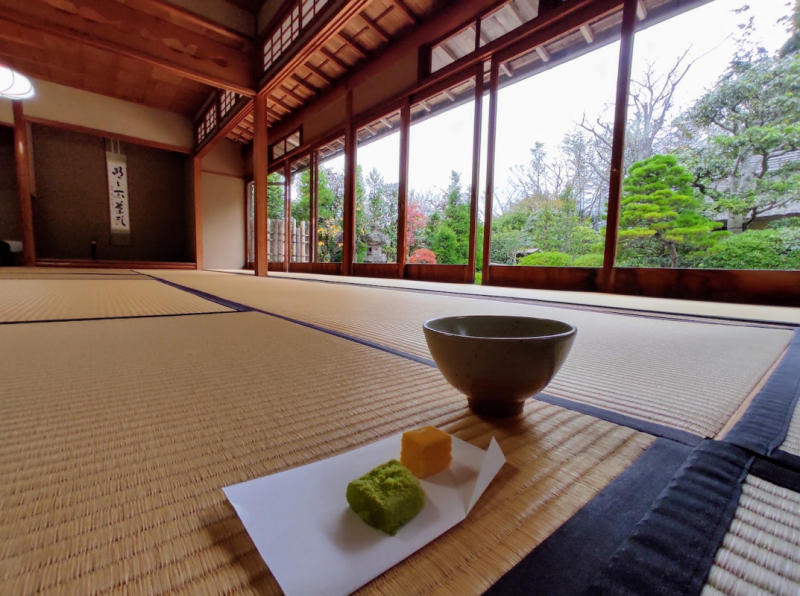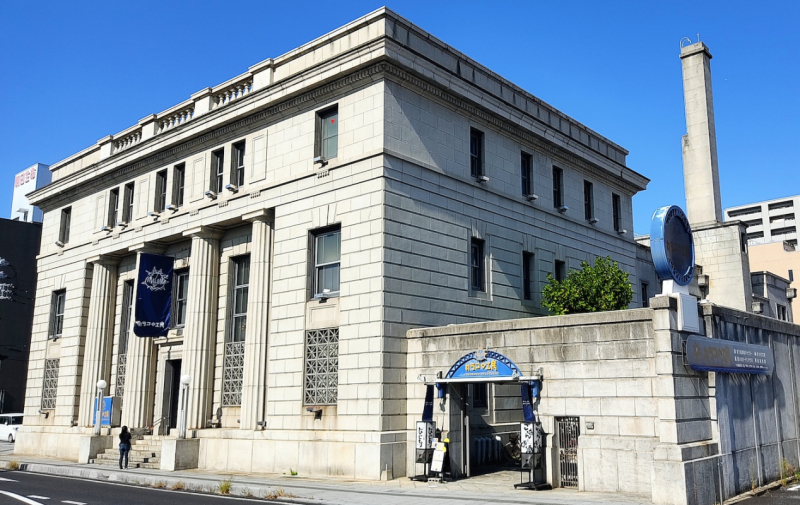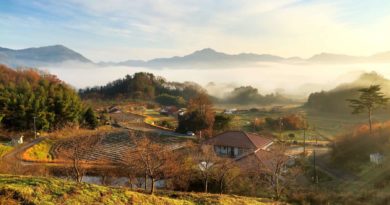Tea culture for all in Matsue
Matsue, the castle town on the Japan Sea coast in Shimane Prefecture, is a place where Japanese traditional culture is still very much a part of everyday life. This is none more so than in the case of its tea culture and matcha tea in particular. People in Matsue love their tea, consuming around 5 times the national average. They are also Japan’s top consumers of wagashi, the beautifully-crafted sweet treats that perfectly complement Japanese tea.
Fumai-san, Matsue’s tea evangelist
Matsue’s love of tea is attributed to feudal lord Fumai Matsudaira, who ruled the area in the second half of the 18th century. A highly cultured man with a particular interest in the way of tea, he developed his own school of tea ceremony and in Matsue he is affectionately referred to as Fumai-san. Fumai rejected the prevailing trend of using tea ceremony to show one’s status and wealth. “Making cha-no-yu (tea ceremony) a luxury, exhausting beauty to make it splendid is a distressful thing,” is one of his most famous quotes and he promoted a return to the origin of tea master Sen no Rikyu’s wabi-cha which emphasizes simplicity. Fumai didn’t much care for strict rules and rigid traditions when it came to enjoying tea, an uncommon attitude at the time which helped a form of pleasure once confined to the samurai class spread among the general populace.
The importance of tea culture in Matsue soon becomes clear as you head from the railway station in the direction of Matsue Castle. Tea shops and shops selling wagashi sweets are more common than even convenience stores. On the road described by writer and Matsue resident Lafcadio Hearn as the “Street of Rich Merchants”, that runs north from Shirakata Tenmangu Shrine in Tenjin is a wagashi seller that has been in business since in 1809, when Fumai was still ruling the city. Not knowing where to start, the staff point me to fumai-gonomi; three of wagashi favored by Fumai-san himself. The three sweet treats in question are azuki bean ogura-matsukusa, wakakusa coated with sweet green powdered rice and koshidaka-oboro-manju.
A chance meeting with Matsue’s Mr Matcha
Further down the street is another long running family business. Nakamura Chaho is Matsue’s oldest tea store, established in 1884 and the Nakamura family are one of the most prestigious tea families in Japan.
As we are browsing, trying to work out the difference between all the different packs of tea and admiring the bowls and other tea-related paraphernalia, the 4th generation company president, Hisao Nakamura, happens to walk in. He has been helping with the monthly Tenjin street market and is dressed in his neighborhood association’s happi coat. We introduce ourselves and he graciously puts whatever plans he may have had on hold and offers us a cup of tea.
Nakamura-san exudes the spirit of my favorite Fumai quote, “Become the heart of the guest and be the host. Be the heart of the host and be the guest.” The tea arrives as he is telling us about the history of the family business. Inside the cup is frothy matcha tea. This comes as a surprise. In these kinds of situations guests are usually served sencha and for a moment I think we are being treated as especially honored guests and I start worrying about how I should show proper respect to the tea and the bowl it is served in. Nakamura-san explains, however, that serving matcha to guests is the norm in Matsue and urges us to relax and just enjoy the taste.
Go to any supermarket in Matsue and you will find a selection of matcha tea uncommon outside of specialist shops elsewhere in Japan, Nakamura-san tells us. In Matsue, enjoying matcha really has moved from the zen tea house and into the living room. It’s the equivalent of taking a casual coffee break and the beverage of choice when chatting with friends.
He shares a local tip. Always be prepared to linger when offered tea in Matsue as it is considered rude not to accept a second serving, a custom that may go some way to explaining the city’s high level of consumption and why, as Nakamura-san explains, matcha sold in Matsue is generally less bitter than in parts of Japan, the smoother taste being more conducive to drinking throughout the day.
Formality and a considered appreciation of tea ceremony does, of course, still have its place in Matsue. Nakamura-san shows us his small personal tea house in a courtyard behind the shop which breaks up the long, narrow merchant house distinctive of the area and a temporary exhibition of tea-related bowls, scrolls and utensils being held in a thick-walled, traditional storehouse.
Despite the strength of tea culture in Matsue, Nakamura-san is acutely aware that Japan’s declining population and competition from other beverages presents the Japanese tea business some tough challenges. Characteristic of the company whose founder invented the electric tea grinder, Nakamura Chaho isn’t afraid of trying modern methods to preserve and promote this most traditional of products. Seeing a gap in the growing market for other kinds of Japanese tea in SE Asia, Nakamura opened a matcha tea shop, Chaho, in a Bangkok shopping center in 2007. The combination of stylish, modern design and exhibiting traditional tea making methods for watching customers was a hit. Since Nakamura-san had the well-publicized opportunity to serve matcha to a Crown Princess two years later, the business has gone from strength to strength.
If you are interested in the teas on offer at Nakamura Chaho on their website has an excellent summary of the different varieties and their characteristics, including Nakano Shiro which was reportedly Fumai-san’s favorite tea.
Wagashi: Where art meets food art
After Nakamura-san bids us farewell, our next port of call is the 140-year-old Saiundo wagashi shop a short walk away. On the first floor of the modern two-story building is a huge array of colorful wagashi, a feast for the eyes as well as the palate.
Here, you can order your wagashi from the wide selection on display with your choice of Japanese tea to eat and drink upstairs in a very pleasant seating area. While you wait, check out the incredible sculptures on display on both floors, all, believe it or not, are crafted out of wagashi.
Wagashi master in an unexpected location
As mentioned above, there are tea and wagashi shops all over the city and locals all seem to have their favorite places. Worth mentioning, however, is Cafe Kiharu which is located within the Matsue History Museum across the road from Matsue Castle. You might expect a museum cafe to be a somewhat “inauthentic” tourist spot, but hear me out. At Kiharu, you can not only try whisk your own matcha tea and to enjoy with wagashi with a lovely view of a Japanese rock garden, but you can watch one of Japan’s most skilled wagashi craftsmen, Itami Tsugio, fashion the delicate sweets before your eyes. It is a wonderful experience and offers a traditional experience without having to worry too much about tea etiquette.
A tea house for for a prince
Also near the castle is Meimei-an, a traditional tea house commissioned by Fumai-san himself. It was moved to its current location in 1966, on the occasion of the 150th anniversary of the tea master’s death. Here you can experience a more formal, though still quite relaxed and leg-savingly short, tea ceremony, for a small charge in a splendid tea room which looks out onto a gorgeous garden.
Make your own wagashi
Those who would like to try their hand at making wagashi themselves should head to the Karakoro Art Studio housed in the former Matsue branch of the Bank of Japan where wagashi-making classes are held twice a day.
Matsue Tea Trip
If you are a matcha fan or one of the growing number of people who are discovering the joy of Japanese tea a visit to Matsue is a must. It’s also the perfect place for a stress-free introduction to the world of tea and wagashi, in a city where the boundaries stretch across the centuries and from the houses of princes to the kitchens of the masses.
Non-Japanese passport holders can currently take a direct express bus between Hiroshima and Matsue for only ¥500 if you purchase your ticket in advance and agree to filling out a simple questionnaire. Note that ticket offices may only open after the first departure of the day.
More articles about Matsue
・Let culture wash over you in Matsue
・Matsue’s Surprising Kyomise District
・5 great coffee shops in Matsue


